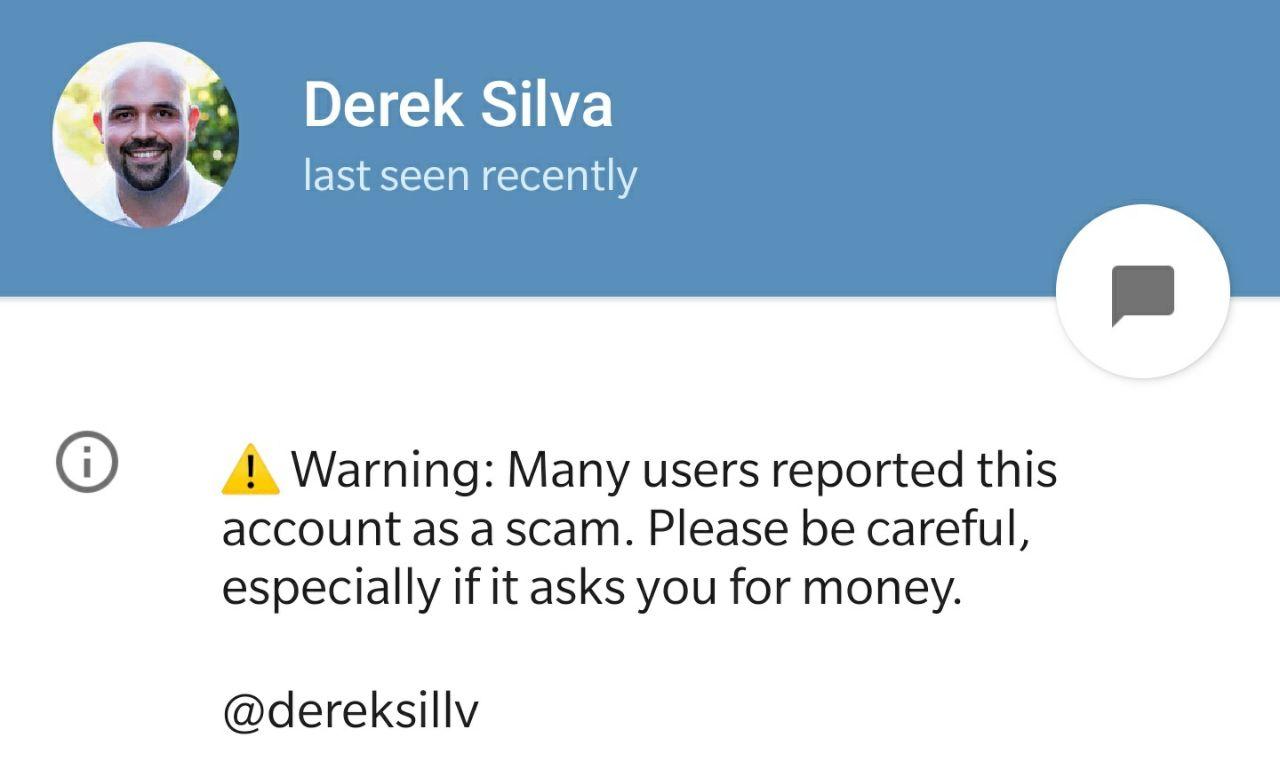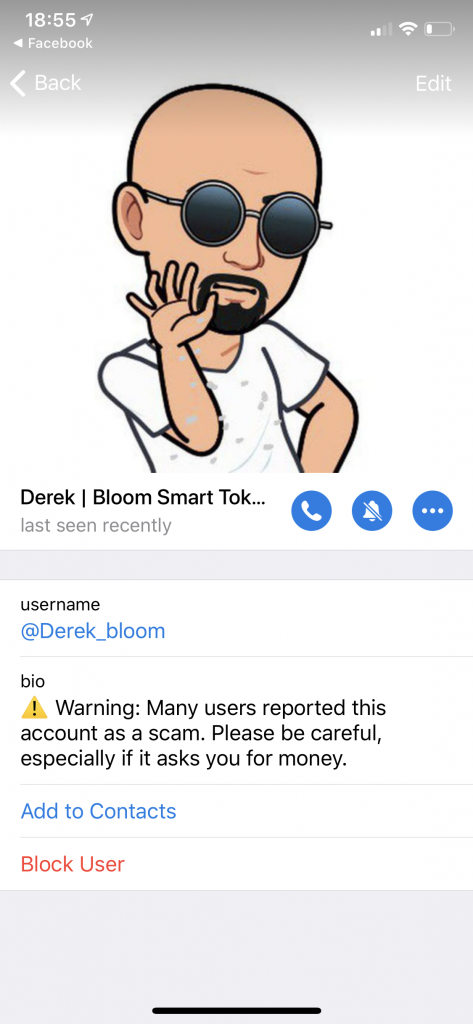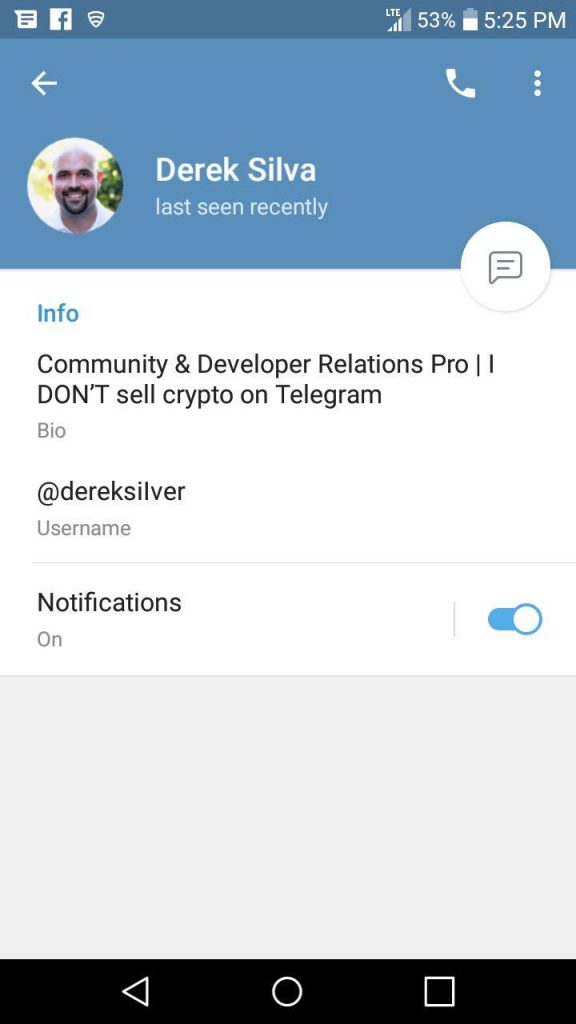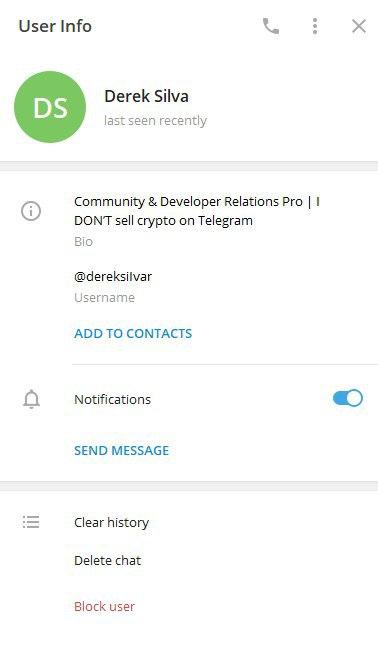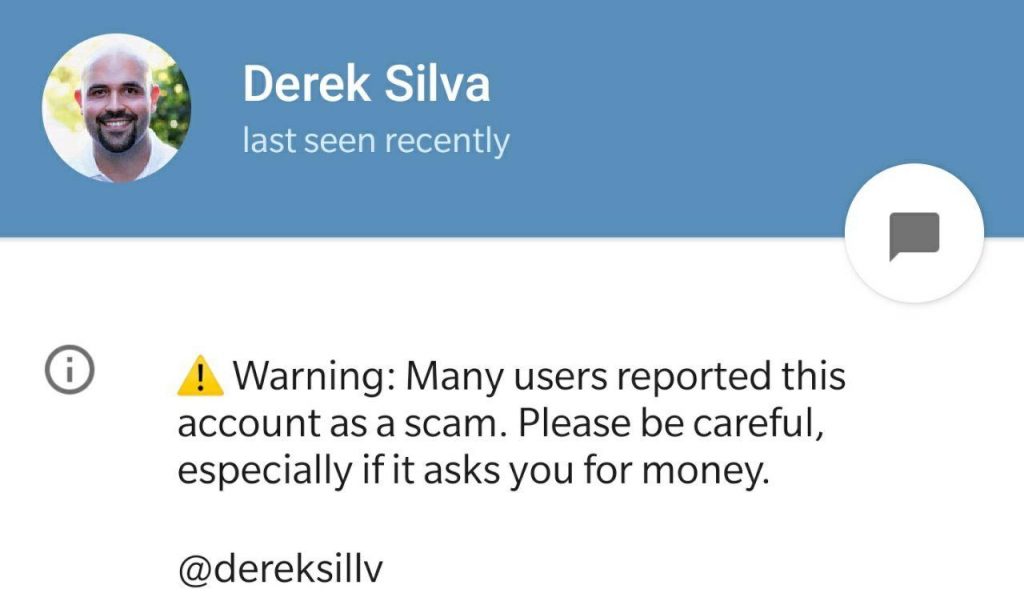Today we are going to talk about something incredibly important. Telegram scammers. They are everywhere, impersonating the team members of almost every blockchain project, team or company out there even if the people they are impersonating don’t have a presence on Telegram. They know that they can trick at least a small number of people into participating in a fake airdrop, or a fraudulent transaction of some kind, in order to profit, and so they persist.
So, this is going to focus on this problem: how to identify a scammer on Telegram.
If you’re not familiar with Telegram, it’s a chat platform with millions of users all over the world. Direct messages are encrypted end-to-end between individuals, and you can create private groups, public groups, and even channels for one-way communication. You can learn more about Telegram on its website, telegram.org.
If you are involved in the cryptocurrency or blockchain space at all, there’s a good chance you have a Telegram account. If you have a Telegram account, there’s an even better chance you have received a message from a random person at some time. It happens several times a week to CommComm team members. For the Telegram groups we manage and moderate, the members of those groups often receive a message from someone claiming to be a Telegram group administrator. It often isn’t a CommComm team member! It’s a scammer trying to dupe you out of your coins or assets. Let’s walk through the various ways you can spot these jerks who are out to steal your assets!
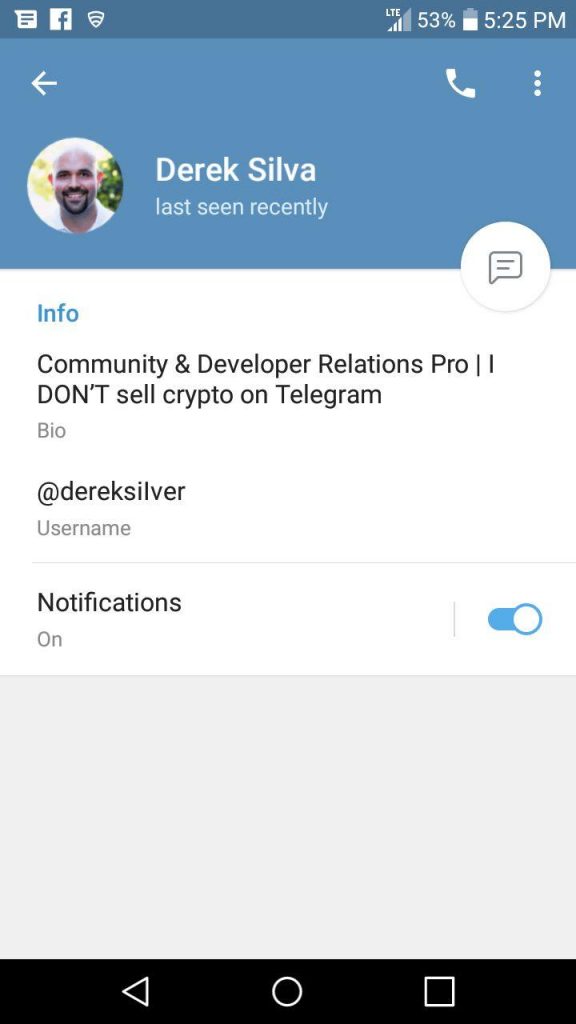
We have got some screenshots here from people who have been nice enough, and thoughtful enough, to share them with me. These scammers are smart enough not to message the person they are impersonating, so I have to rely on the kindness of others to get this evidence.
Example number one — here’s the Telegram profile of someone trying to convince you that you can trust them to sell you crypto over Telegram. Note a few things: they copy the current profile photo for whomever they’re impersonating, and they will copy the name and bio as well no matter what it says. But, of course, they can’t match the username because usernames are unique.
So how can you tell this profile apart from the real deal? A few ways:
- No matter how close the username looks to the real thing, especially since Telegram usernames are not case sensitive, copy and paste the usernames into a plain text editor. Here you will see that my username is @dereksilva, all lowercase. The scammer’s username is close to the real one, but instead it’s @dereksilver. We have several other examples here with variations on the spelling, but all incorrect.
- Another way you can tell an impersonator and the real person apart is that they do not write like the real person they are impersonating. Whether it’s broken English or bad grammar, they simply cannot match the style and tone of the original.
- Telegram will show you a lot about another user, including the dates they uploaded their profile photos. Now, Telegram’s latest update doesn’t make it easy for you to find this but what you can do is open up their profile, and then swipe down on almost any part of it. Now you can see the current and past profile photos, and the dates they were updated. So in this example, when the administrator for a group has probably had an account for at least a few months, if not several years, why would they have multiple profile photos all uploaded the same day? Multiple profile photos uploaded the same day is a telltale sign of a scammer account.
- Another telltale sign is the lack of shared groups. How can this person be the admin for a group you just joined if they’re not a member of that group? Unless the person has modified their privacy settings, Telegram shows you which groups you and another user have in common. If they claim to be the admin of a group you are a member of, but that group doesn’t appear on their profile, they are probably not the person they say they are.
- If you just can’t be sure of any of the evidence above, and the potential scammer insists they are the real person, you can also do this. Go back to the group, find a message posted by the actual group administrator, click/tap on their profile photo, and then click/tap “Send Message.” Do you see a chat history? If not, then the other conversation is definitely a scam.
- If all else fails, ask them to prove it by sending you an email or messaging you publicly in the group they claim to belong to. You could even ask them for a video call! If they can get an email to your inbox from a valid email address for that project’s domain, like bloom.co, orchid.com, etherscan.io, get-protocol.io, or nexo.io, then there’s a good chance they are the real deal. Or if they confirm they are chatting with you in the public group, and they have the admin (or similar) tag in the member list, then you are probably fine.
However, you still need to put that into context of what their ask was — are they asking for private keys, passwords, or for you to send them crypto assets over Telegram? If so, you should probably block them from chatting with you further no matter what. Legitimate teams and people do not engage in that type of behaviour. Period.
If an offer sounds too good to be true, or sounds weird or suspicious, it probably is!
So, with a bit of investigative work, you can save yourself from a world of hurt. If you are approached at random on Telegram with an offer, always ask yourself what’s in it for them? If they’re lying, are there any repercussions to them or only for you? And of course, can they verify in any way that they are who they say they are? If they can’t verify their identity somehow, or that they are a real team member, do yourself a favour and walk away.
If you want help cleaning up your Telegram group, or any other community, please get in touch! We would be happy to help.

